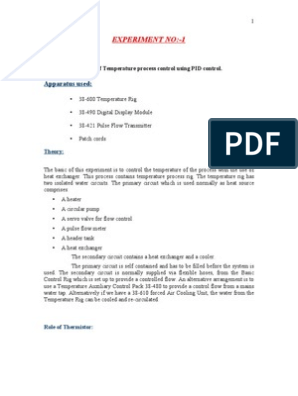1.
An adiabatic process is
a) A process in which heat transfer occurs across the boundary.
b) A process in which no heat transfer occurs across a boundary.
c) A process where matter is transferred across a boundary.
d) A process where matter is not transferred across a boundary.
2. Positive work and positive heat transfer is defined in this class as
a) Work done on the system and heat transfer to the system
b) Work done on the system and heat transfer out of the system
c) Work done by the system and heat transfer out of the system
d) Work done by the system and heat transfer to the system
3. The Critical Point is
a) The point where solid, liquid, and gas phases can occur. It is located at point A.
b) The point above which there is no distinction between liquid and gas phases. It is
located at point A.
c) The point where solid, liquid, and gas phases can occur. It is located at point B.
d) The point above which there is no distinction between liquid and gas phases. It is
located at point B.
4. The Triple Point is
� a) The point where solid, liquid, and gas phases can occur. It is located at point A.
b) The point above which there is no distinction between liquid and gas phases. It is
located at point A.
c) The point above which there is no distinction between liquid and gas phases. It is
located at point B.
d) The point where solid, liquid, and gas phases can occur. It is located at point B.
5. Use the phase diagram of water to identify the state at point 3.
a) Solid Phase
b) Liquid Phase
c) Vapor Phase
�6. Air is cooled in a process with constant pressure of 150 kPa. Before the process begins,
air has a specific volume of 0.062 m^3/kg. The final specific volume is 0.027 m^3/kg.
Find the specific work in the process.
a) -4.1 kJ/kg
b) 4.1 kJ/kg
c) -5.3 kJ/kg
d) 5.3 kJ/kg
7. If the specific volume of a substance is greater than the specific volume of saturated
vapor then the substance is a
a) Compressed Liquid
b) Two-phase
c) Superheated Vapor
8. Air is expanded in a polytropic process, i.e. PV^n = constant. The initial specific volume
is 0.25 m^3 / kg at a pressure of 127 kPa. If the final pressure is 111 kPa, what is the final
specific volume for n = 1.3?
a) 0.286 m^3/kg
b) 0.225 m^3/kg
c) 0.277 m^3/kg
d) 0.188 m^3/kg
9. What is the angular velocity of a shaft if the power is 2.5 kW and the torque is 7 Nm?
a) 3410 rad/sec
b) 360 rpm
c) 3410 rpm
d) 170 rad/sec
10. Consider air in a piston than undergoes a polytropic process where PV^n = constant and n
is a positive value. How do the pressure and volume change during expansion?
a) Both the pressure and the volume decrease.
b) Both remain constant.
c) Both the pressure and the volume increase.
d) The pressure decreases, and the volume increases.
�11. Where is quality defined on a phase diagram?
a) in the vapor dome
b) in the liquid phase?
c) all of the choices
d) in the vapor phase
12. Consider a heat engine that inputs 10 kJ of heat and outputs 5 kJ of work. What are the
signs on the total heat transfer and total work transfer?
a) Heat transfer and work transfer are both negative.
b) Heat transfer is negative and work transfer is positive.
c) Heat transfer and work transfer are both positive.
d) Heat transfer is positive and work transfer is negative.
13. In thermodynamics it is very important to state any assumptions at the beginning of your
analysis. If you are asked to find the net work transfer out of a cycle of a piston and
cylinder, which of the following would you assume? (choose the best answer)
a) Work transfer only occurs across the system boundary.
b) The air in the piston is considered a closed system.
c) Changes in kinetic energy and potential energy are negligible.
d) All of the choices
14. Which of the following is true?
a) Heat transfer is a energy transfer process
b) You cannot boil water at a constant pressure
c) A system has heat transfer if the system is at a high temperature.
d) The units of heat transfer are Kelvin or Celsius.




































































































